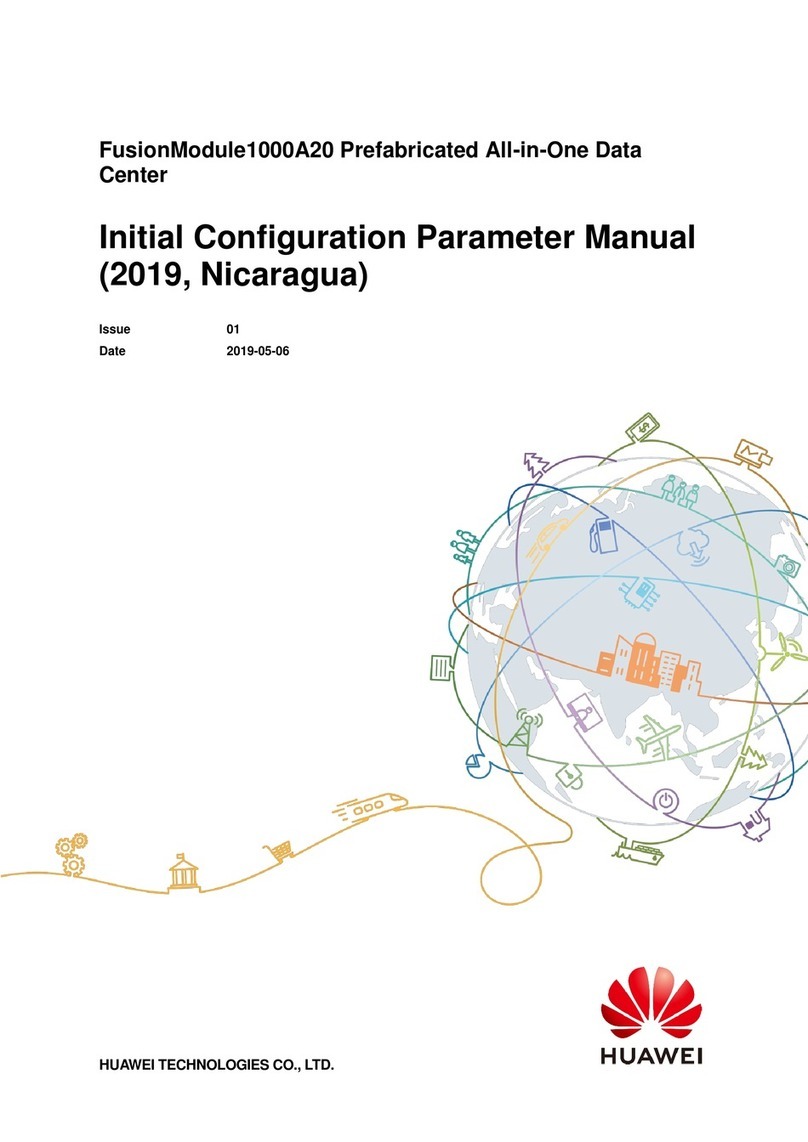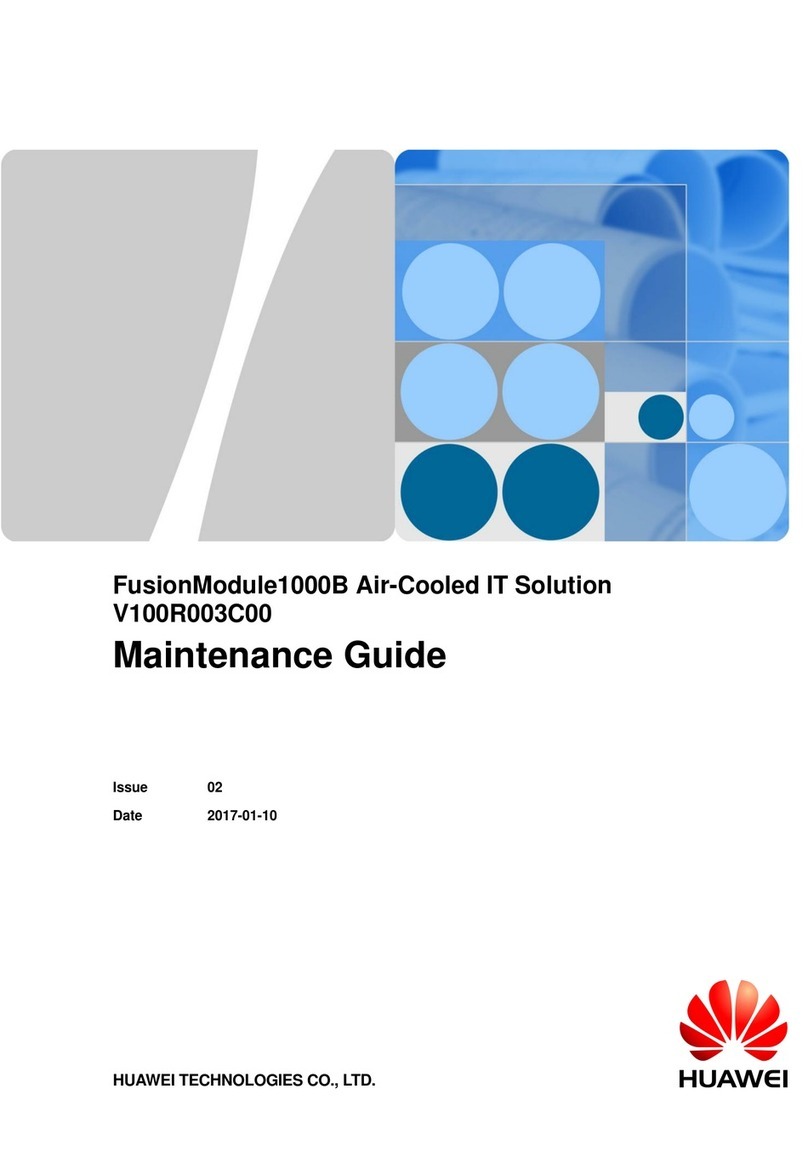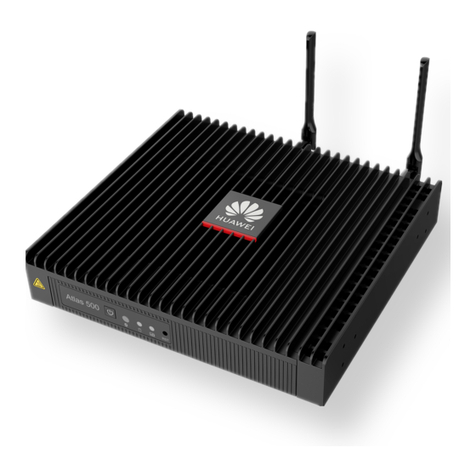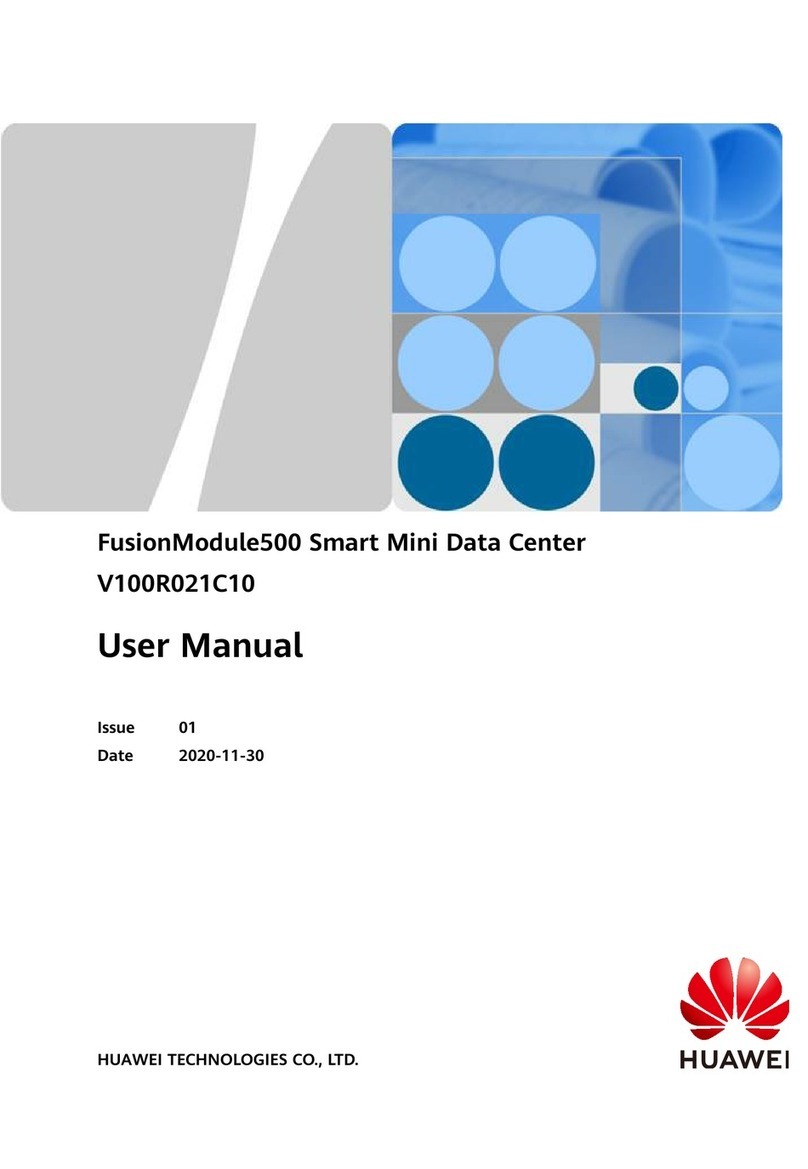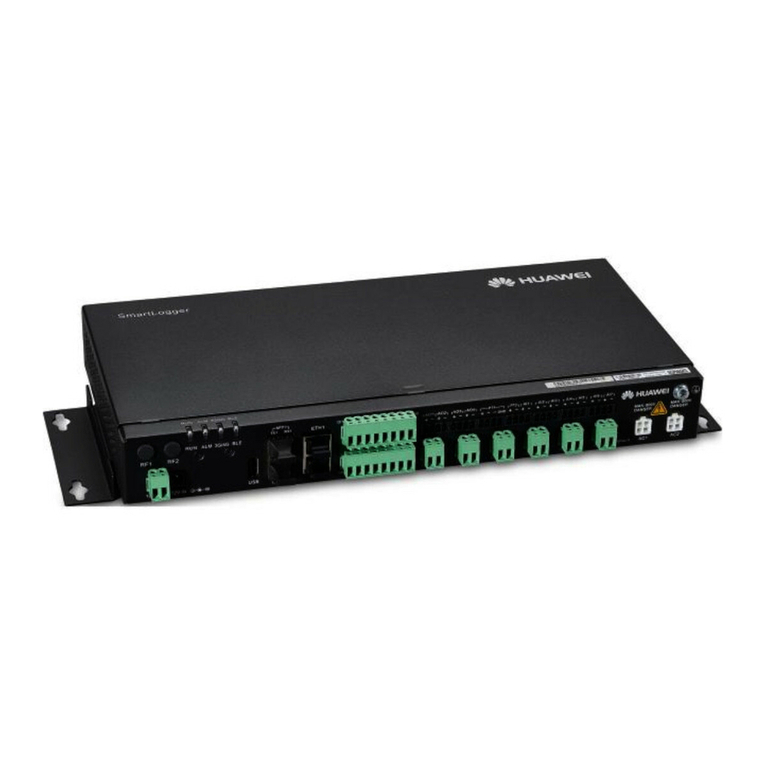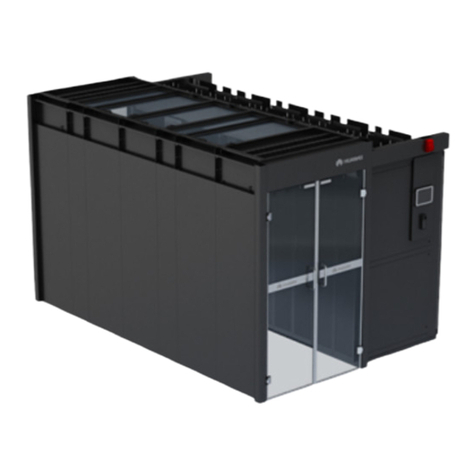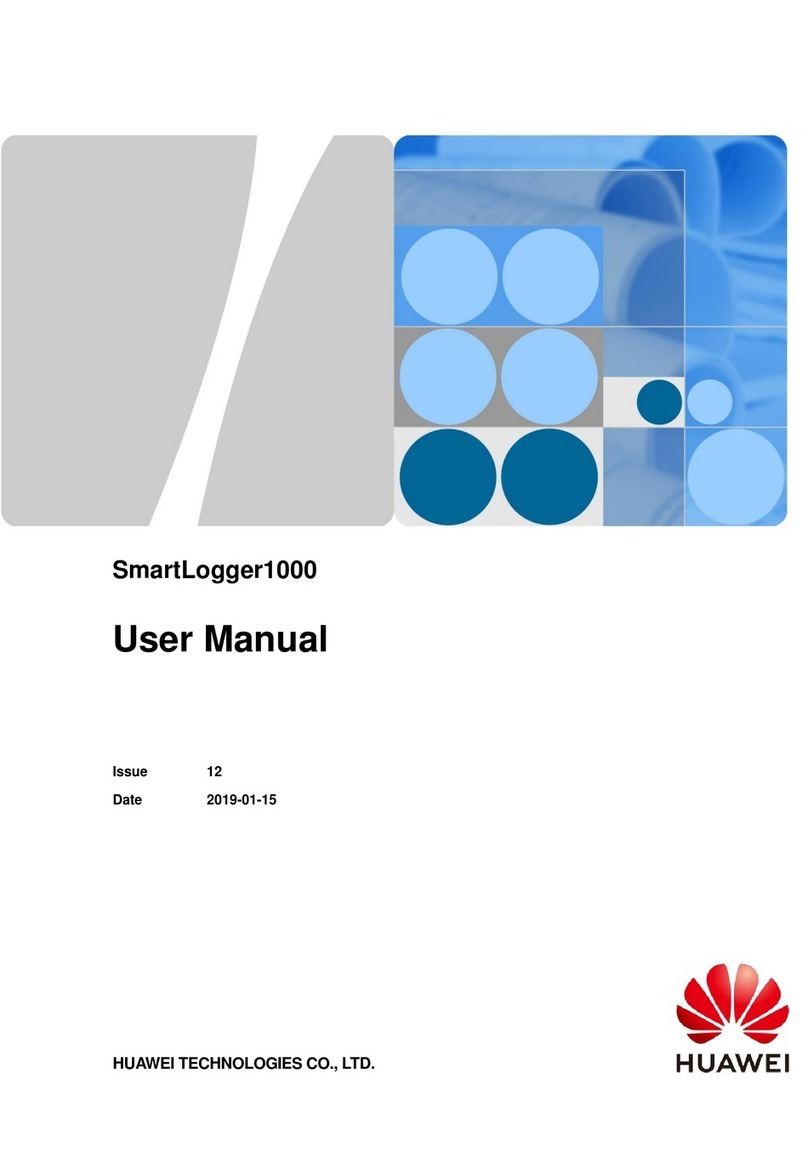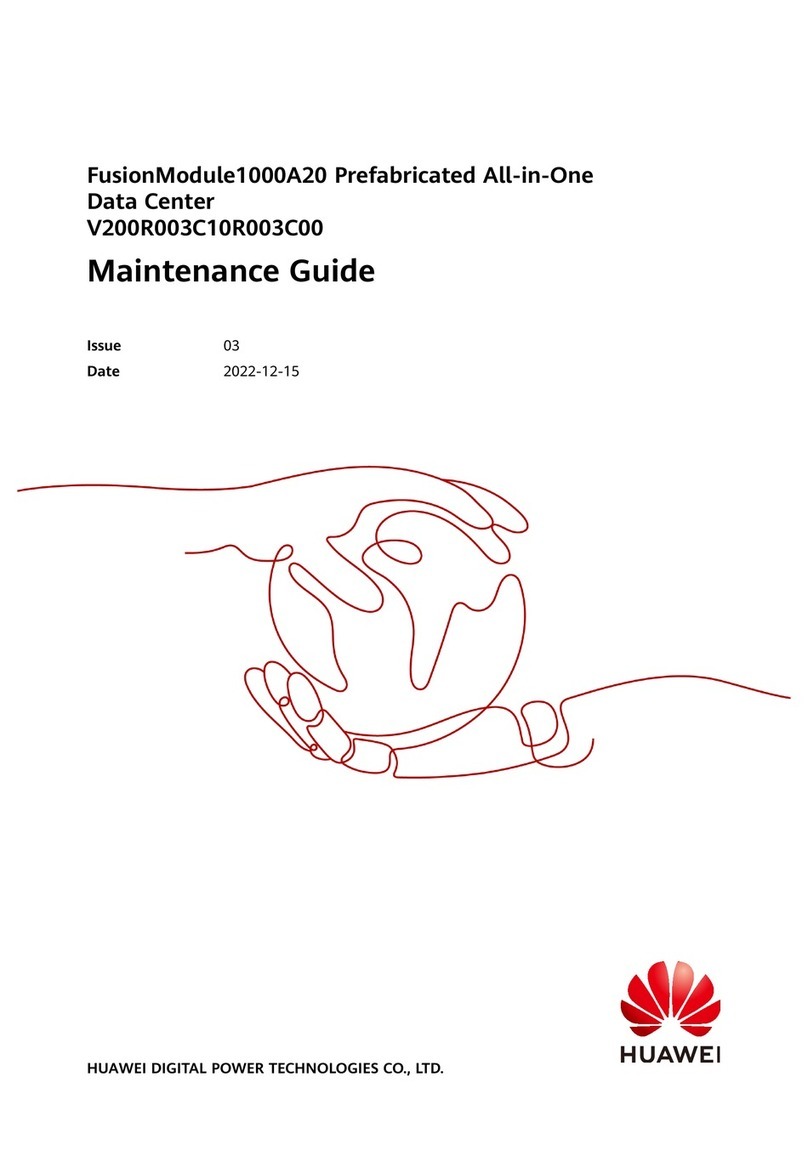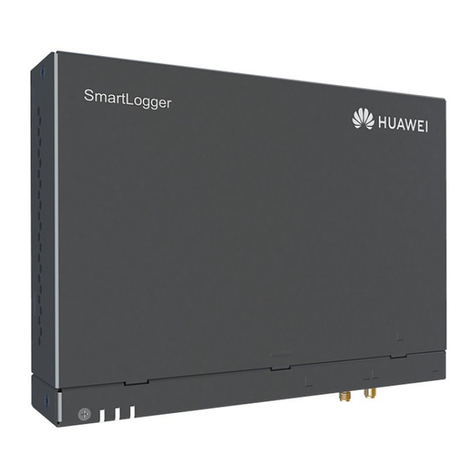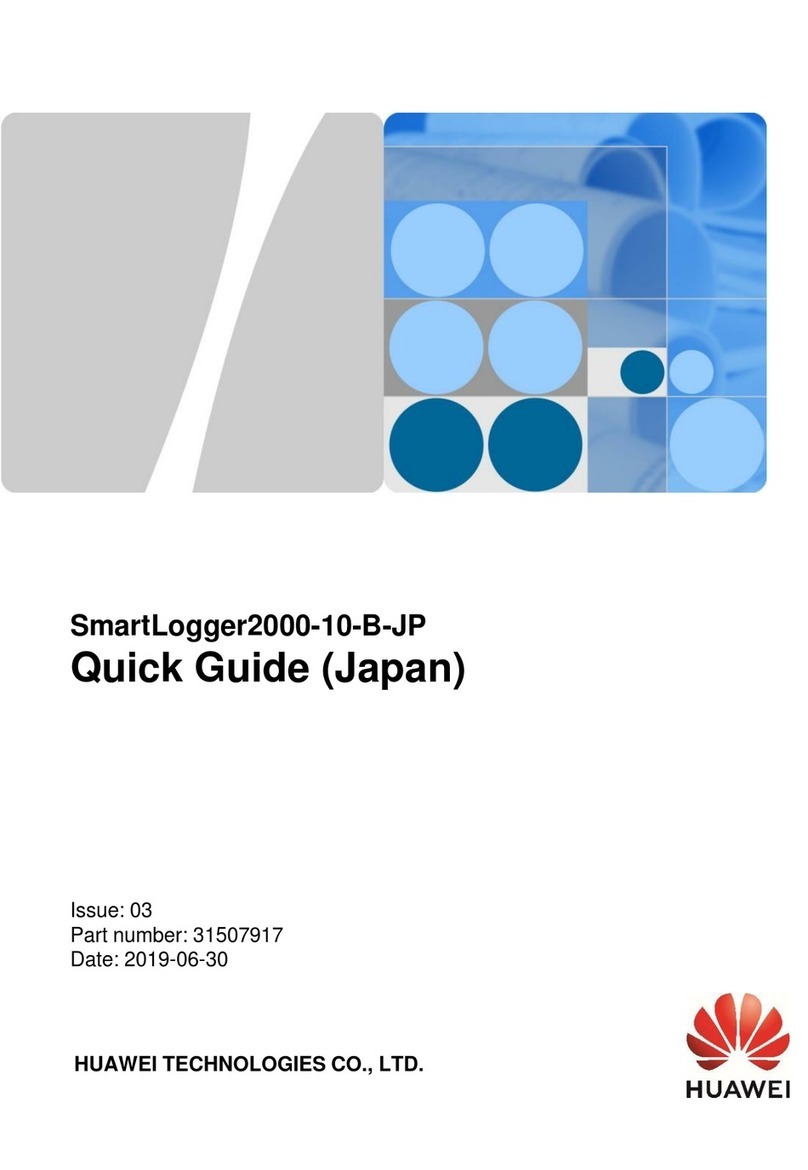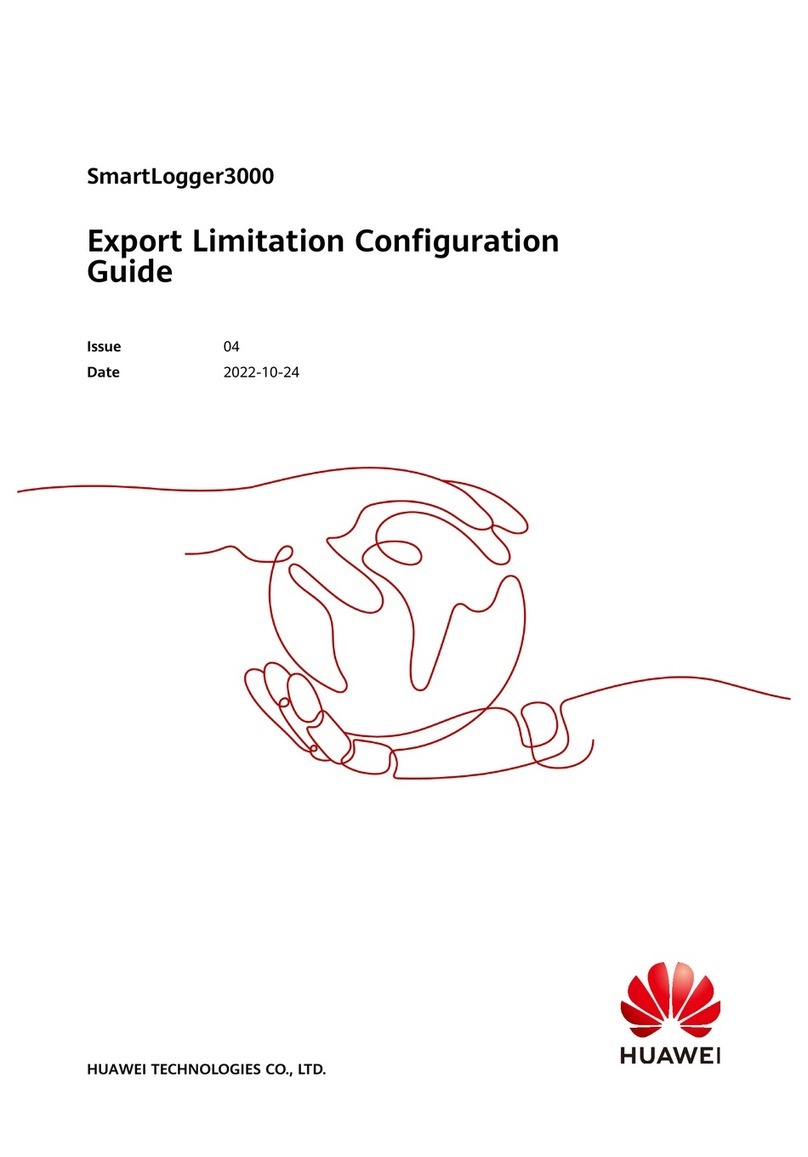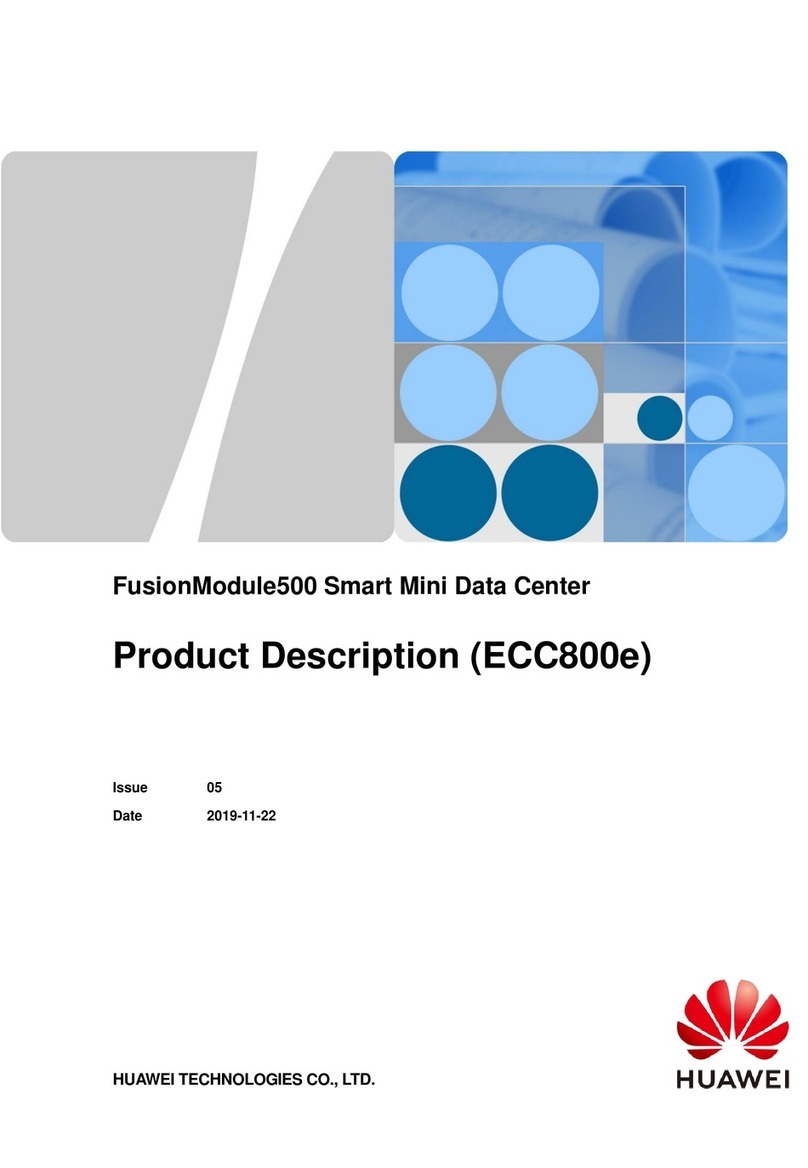
4.2 (Optional) Base Installation Scenario............................................................................................................................36
4.2.1 Determining the Pre-fab. Module Installation Position....................................................................................... 37
4.2.2 Removing the Pre-fab. Module Protective Cover................................................................................................... 42
4.2.3 Hoisting and Securing the Pre-fab. Module............................................................................................................. 43
4.3 Grounding the Pre-fab. Module....................................................................................................................................... 46
5 Installing External Accessories for the Pre-fab. Module.............................................. 48
5.1 (Optional) Installing External Cable Trays................................................................................................................... 48
5.2 (Optional) Installing Awnings.......................................................................................................................................... 50
5.3 (Optional) Installing Step Ladders..................................................................................................................................54
6 Installing External Pipes for Smart Cooling Products.................................................. 57
7 Removing Transport Protection Materials...................................................................... 60
7.1 Removing Transport Protection Materials for Smart Cooling Products............................................................. 60
7.2 Removing Transport Fasteners from Cabinets............................................................................................................ 63
7.3 Removing Sliding Door Fasteners................................................................................................................................... 66
8 Installing Devices Inside the Pre-fab. Module................................................................68
8.1 Installing Power Supply and Distribution Devices..................................................................................................... 68
8.1.1 Installing Battery Modules............................................................................................................................................. 69
8.2 (Optional) Installing the Electric Heating Belt........................................................................................................... 72
8.3 Installing Monitoring Devices........................................................................................................................................... 75
8.3.1 (Optional) Installing a 2288X V5 Server................................................................................................................... 75
8.3.2 (Optional) Installing ECC800-Pro Accessories......................................................................................................... 76
8.3.3 Installing a PAD..................................................................................................................................................................80
8.4 Installing Fire Extinguishing Devices.............................................................................................................................. 81
8.4.1 Installing CE-Certied Fire Extinguishing Devices..................................................................................................81
8.4.1.1 (Optional) Installing the Fire Cylinder....................................................................................................................81
8.4.1.2 Connecting the Cables to Extinguishant Control Panel Batteries................................................................. 84
8.4.2 Installing Standard Fire Extinguishing Devices....................................................................................................... 85
8.4.2.1 (Optional) Installing the Fire Cylinder....................................................................................................................85
8.4.2.2 Connecting the Cables to Fire Alarm Control Panel Batteries....................................................................... 90
8.4.3 (Optional) Connecting the Cables to ASD Power Box Batteries.......................................................................91
8.4.4 Removing the Fire Cylinder in the SmartLi Cabinet and Filling Extinguishant............................................92
9 Installing Cables Outside the Pre-fab. Module.............................................................. 97
9.1 Connecting Input Power Cables for the Pre-fab. Module....................................................................................... 97
9.2 (Optional) Connecting Generator Start/Stop Cables (ATS Input)....................................................................... 98
10 Removing Transport Protection Materials from Fire Extinguishing and
Monitoring Devices................................................................................................................ 100
11 Installation Verication.................................................................................................. 103
A Basic Installation Operations...........................................................................................105
A.1 Cable Installation Techniques........................................................................................................................................ 105
FusionDC1000A Prefabricated All-in-One Data
Center
Installation Guide (IT Scenario) Contents
Issue 01 (2021-04-20) Copyright © Huawei Technologies Co., Ltd. v
